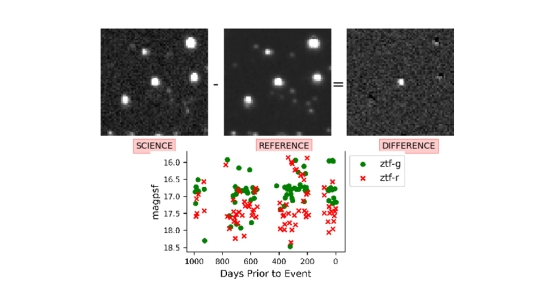ZTF on Zooniverse
You are here : Home / Public Outreach / ZTF on Zooniverse
Citizen science projects with ZTF
The Zwicky Transient Facility scans the entire sky every two nights in search of anything that changes in brightness. Our survey generates so much data that we can take a helping hand from citizen scientist to classify the objects we observe. We have a long-standing relationship with Zooniverse and have launched several citizen science projects on their platform.
Zwicky Quirky Transients
Large area surveys like the Zwicky Transient Facility are overwhelming for individual researchers as hundreds of thousands of varying objects are found. A fraction of these are artifacts (bogus). This project is to mark such bogus objects apart from real/genuine (astronomically varying) sources. You can help us do that. The classifications here will form input to machine learning algorithms. Once trained, the machine learning algorithm will provide a 'real'-ness to each object, a number between 0 and 1, called the RB-score. Improving the machine learning performance at all magnitudes and in crowded fields will help the ZTF project achieve its science goals.
Read more Join Project
Zwicky Chemical Factory
Every night ZTF looks at millions upon millions of galaxies, and finds hundreds of thousands of sources that have changed in brightness, and each of those sources is announced to the world. Many of these are supernovae, stellar explosions that emit an enormous amount of light. Once we obtain a supernova spectrum, we attempt to classify it using the SuperNova IDentification (SNID) algorithm. SNID has a large "bank" of template spectra (historical supernovae that are really well studied and understood). For any new spectrum, SNID attempts to automatically find the closest match in the template bank. Most of the time SNID is correct, but the differences between SN types can often be subtle and this is why we need your help. While SNID can do a lot of the work, we need humans to verify the final classifications.
Read more Join Project